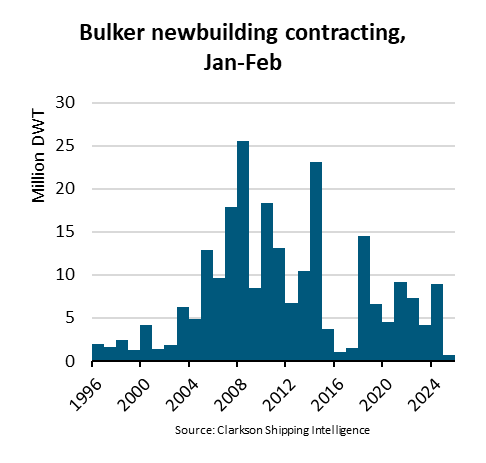 Dire development driven by the continued rise in Covid-19 cases and the spread of new variants in major seafaring nations, leading to increased government restrictions in important crew change hubs, and limited opportunity to perform crew changes, especially in Asia. No signs of relief as seafarers continue to have limited access to vaccines.
Dire development driven by the continued rise in Covid-19 cases and the spread of new variants in major seafaring nations, leading to increased government restrictions in important crew change hubs, and limited opportunity to perform crew changes, especially in Asia. No signs of relief as seafarers continue to have limited access to vaccines.
The Neptune Declaration Crew Change Indicator for July suggests that the crew change crisis is getting worse. Aggregated data from top ten ship managers shows that the number of seafarers onboard vessels beyond the expiry of their contract has continued rising from 7.2% to 8.8% in the last month. The number of seafarers onboard vessels for over 11 months has risen from 0.4% to 1%. Since the launch of the Indicator in May, the number of seafarers onboard vessels beyond the expiry of their contract has risen from 5.8% to 8.8%, which corresponds to a 51,7% relative increase. The number of seafarers onboard vessels for over 11 months has increased from 0.4% to 1%, corresponding to a 150% relative increase. The Maritime Labour Convention states that the maximum continuous period a seafarer should serve on board a vessel without leave is 11 months.
Members of the Neptune Declaration taskforce comment on the latest development:
“Seafarers play a crucial role in keeping global supply chains running, delivering essential healthcare, foodstuff, consumer products and just in time manufacturing components. Without them 80% of our shopping baskets would be empty. We are all indebted to resolve the crew change crisis now. The difficulties in carrying out crew changes can easily be overcome by Governments if they really put their minds to it. Where there is a will, there is a way," says
Jeremy Nixon, CEO, ONE.
“The crew change crisis has been ongoing for more than a year and a half, with the highest cost falling on seafarers and their families’ wellbeing. The situation is going from bad to worse. We need more than lip service from governments, we need concrete action that allows crew changes to be carried out in a safe manner,” says
Stephen Cotton, General Secretary, International Transport Workers' Federation.
“Resolving the crew change crisis will require all seafarers to have priority access to vaccines. There has been some progress, for instance in the United States and in parts of Europe, which we welcome, but the vast majority of seafarers are still unable to be vaccinated. It is urgent that countries prioritize the vaccination of international seafarers,“ says
Guy Platten, Secretary General, International Chamber of Shipping.
“The latest data shows that the crew change crisis is far from over. It is important that all stakeholders work together to deliver on our shared responsibility of protecting seafarers and making sure that they can return home safely,” says
Kasper Søgaard, Head of Research, Global Maritime Forum.
The Neptune Declaration Crew Change Indicator builds on aggregated data from 10 leading ship managers: Anglo-Eastern, Bernhard Schulte, Columbia Shipmanagement, Fleet Management (FLEET), OSM, Synergy Marine, Thome, V.Group, Wallem, and Wilhelmsen Ship Management, which collectively have about 90,000 seafarers currently onboard.
The contributing ship managers have, as part of the reporting, also highlighted the following key developments that have impacted crew changes in the past month:
1. Continual high infection rates and subsequent domestic lockdowns are still challenging crew changes and causing disruption to crew movements.
2. A decrease of daily inbound flights to the Philippines as well as the travel ban announced by Philippine Government for seafarers traveling from UAE, Oman, Nepal, Bangladesh, Sri Lanka, Pakistan are causing a general disruption to the crew movements.
3. Travel restrictions continue to prevent seafarers from going back home and many flights have been cancelled
4. Leading maritime crew nations continue to have low vaccination rates and seafarers continue to have limited vaccine access.
The Neptune Declaration Crew Change Indicator is published once a month and builds on aggregated data provided by the ship managers to the Global Maritime Forum. The data is used to calculate a weighted average of the percentage of seafarers who have been onboard vessels beyond the expiry of their contract of employment as well as a weighted average of the percentage of seafarers who have been onboard vessels for over 11 months. As top ship managers are making significant efforts – and are often better placed – in facilitating crew changes, the Neptune Declaration Crew Change Indicator cannot be used directly to calculate the full numbers of seafarers impacted by the crew change crisis.
The July Neptune Declaration Crew Change Indicator can be found
here.
The opinions expressed herein are the author's and not necessarily those of The Xinde Marine News.
Please Contact Us at:
media@xindemarine.com


 Ningbo Containerized Freight Index Weekly Commentar
Ningbo Containerized Freight Index Weekly Commentar  Ningbo Containerized Freight Index Weekly Commentar
Ningbo Containerized Freight Index Weekly Commentar  Ningbo Containerized Freight Index Weekly Commentar
Ningbo Containerized Freight Index Weekly Commentar  BIMCO Shipping Number of the Week: Bulker newbuildi
BIMCO Shipping Number of the Week: Bulker newbuildi  Ningbo Containerized Freight Index Weekly Commentar
Ningbo Containerized Freight Index Weekly Commentar  Ningbo Containerized Freight Index Weekly Commentar
Ningbo Containerized Freight Index Weekly Commentar